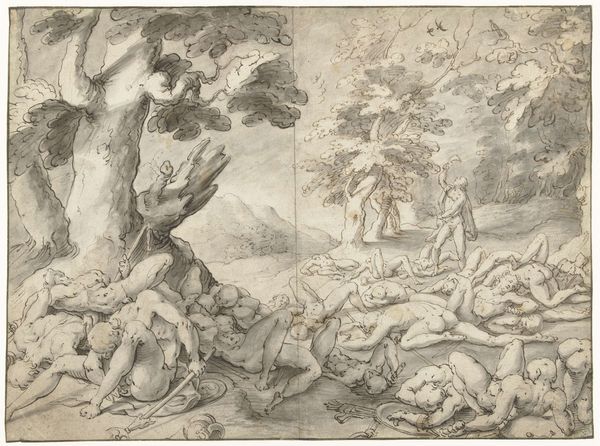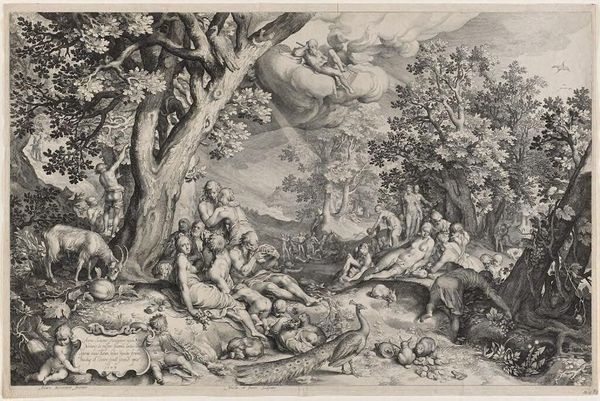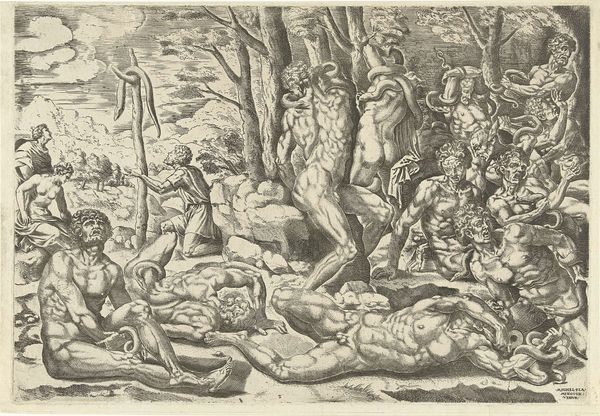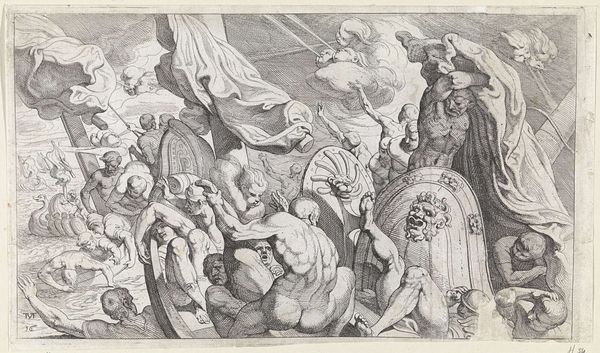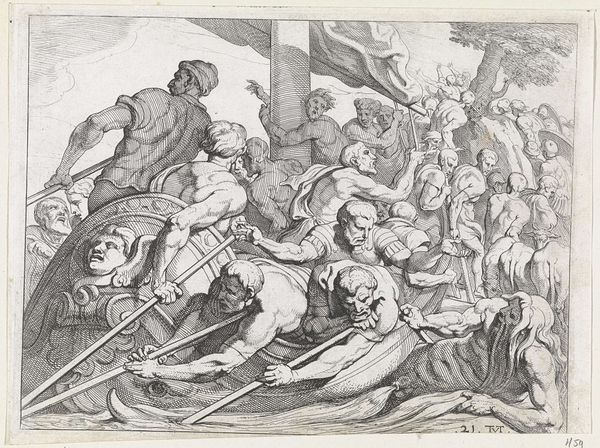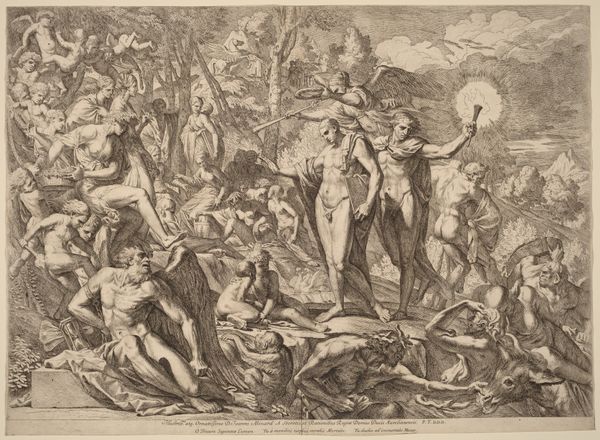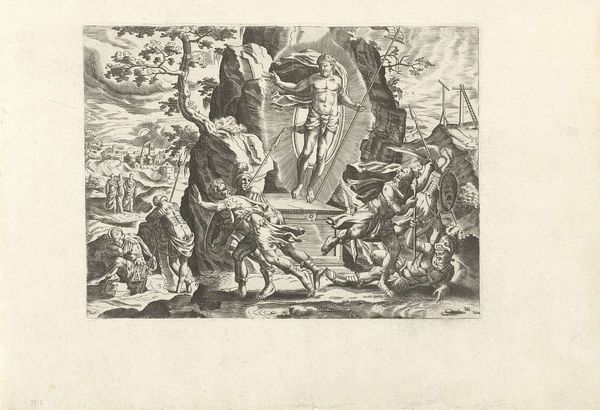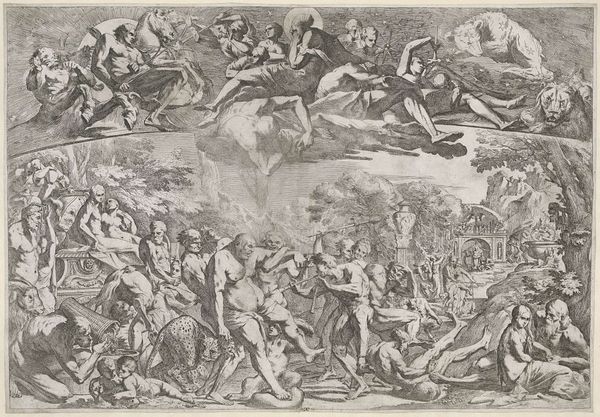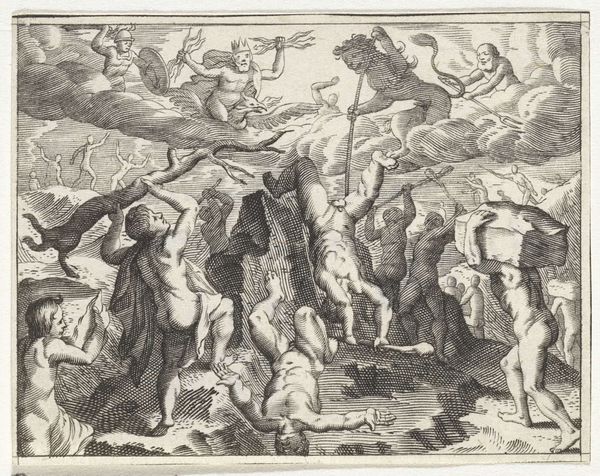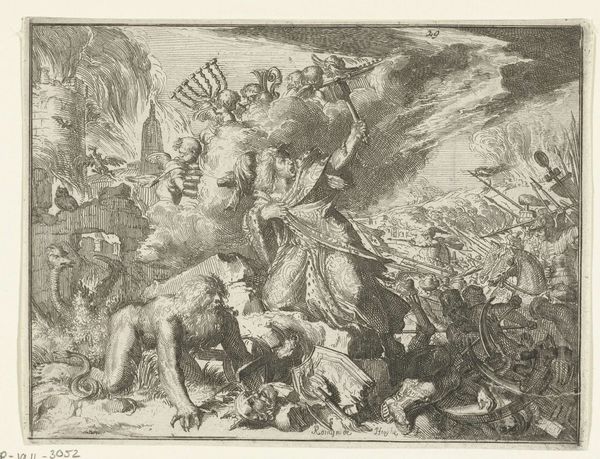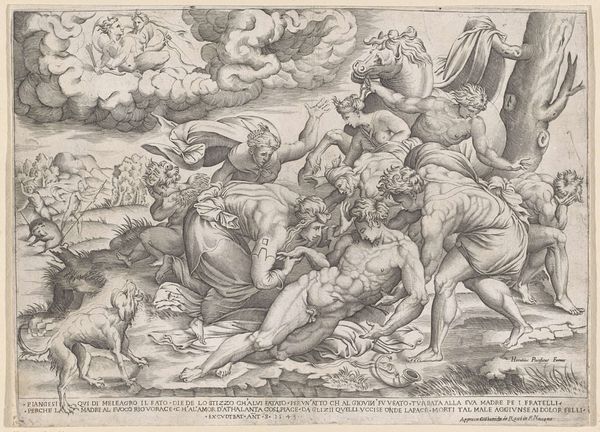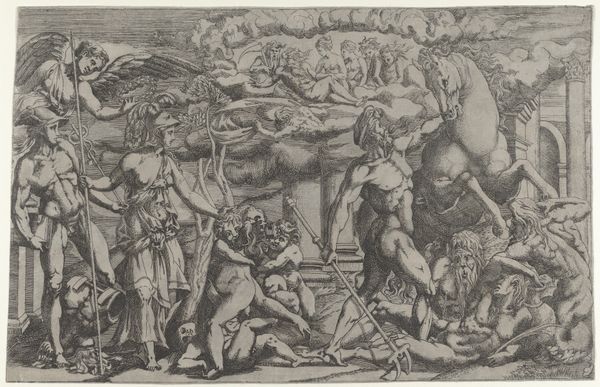
print, engraving
#
narrative-art
#
baroque
# print
#
figuration
#
history-painting
#
engraving
Dimensions: height 192 mm, width 253 mm
Copyright: Rijks Museum: Open Domain
Editor: So, this is Theodoor van Thulden’s “Odysseus and Calypso,” created around 1632-1633. It's an engraving, so a print. It’s busy, isn’t it? All these figures clustered together. What strikes you most about this piece? Curator: The enduring power of archetypes. Odysseus, the quintessential wanderer, and Calypso, the captivating nymph offering solace and temptation. Note how Thulden presents Calypso's offer; a loving embrace. The inclusion of cupids could denote her alluring nature or hint at the false promises that threaten Odysseus’s journey. How does the artist invite the viewer to take a position in this story? Editor: I suppose seeing Odysseus literally building a boat reinforces the theme of him wanting to get home. He's actively choosing his destiny, while the other figures seem caught in this static tableau. Does the visual busyness itself symbolize anything? Curator: Density of imagery mirrors the internal conflict. Observe the sharp contrast: Odysseus, bathed in the light of action, is visually distinct from the shadowy, seductive world offered by Calypso. Note how the heavenly host peers down as spectators: how do they underscore the pivotal nature of Odysseus’ choice between oblivion and homecoming? What resonates most when seeing that? Editor: Seeing all these symbols does reveal a rich cultural understanding of Odysseus's story. I was mainly focused on what was going on with Odysseus but you showed me there is so much more than that! Curator: And the tale continues to influence and shape new myths with each retelling!
Comments
No comments
Be the first to comment and join the conversation on the ultimate creative platform.

